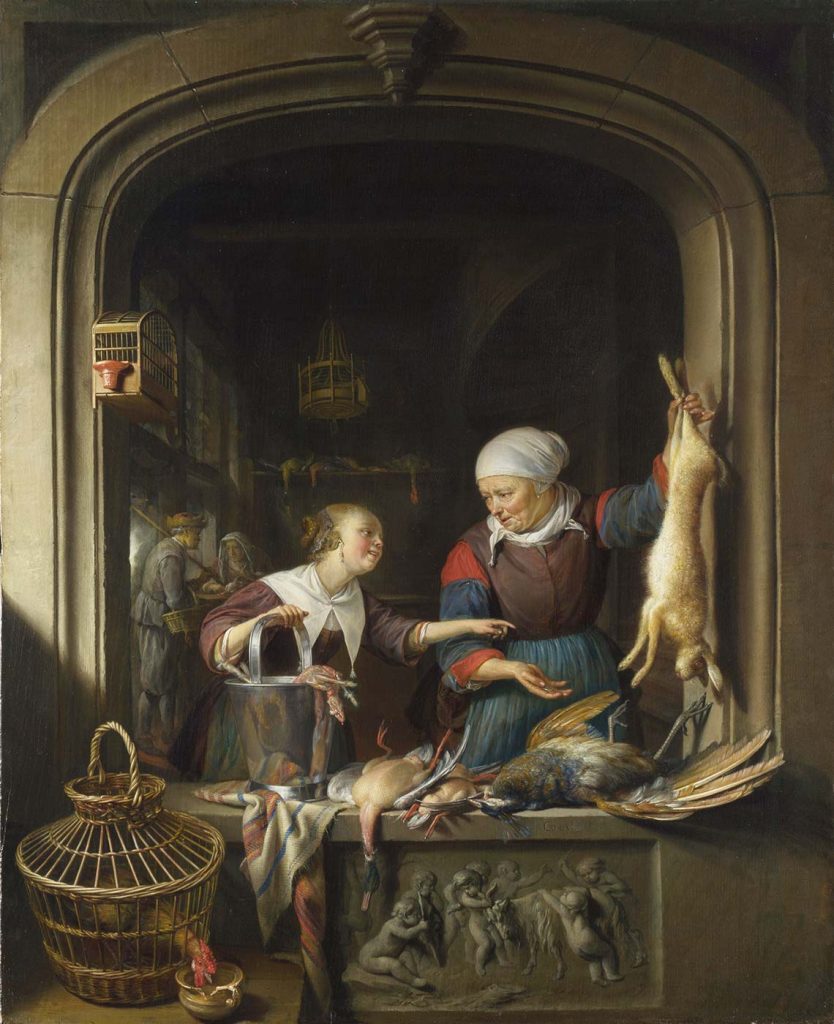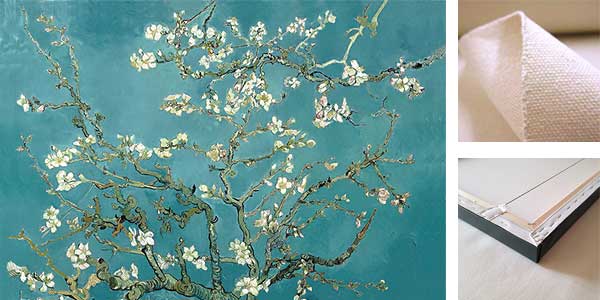
A Poulterer’s Shop by Gerrit Dou was created in 1670. The painting is in National Gallery, London. The size of the work is 58 x 46 cm and is made of oil on wood.
About the Work
This is one of the best examples of Gerrit Dou’s brilliance at depicting different surfaces and textures in an extraordinarily convincing way: the fraying cloth crumpled underneath the bucket, the smooth stone of the sill, the feathers in the duck’s wing and the pocked skin of its breast and neck.
Not only do they look almost photographically real in themselves, but Dou has demonstrated his mastery of reflection and distortion by mirroring them in the shiny curve of the pail. Many seventeenth-century Dutch painters were skilled at painting in this way, but few – if any – could match Dou, who was apprenticed to Rembrandt, but also studied the minute techniques of copper engraving and glass painting. He became one of the most successful artists in Leiden, and his accounts of everyday scenes like this – a young woman buying poultry and game – were particularly sought-after.
As here, many were set in an architectural frame. It is an unusual device: while the details and the interaction between the figures are extremely realistic, the architecture reminds us that this is not a real scene. A typical Leiden poultry seller might well have looked as we see her here, but she definitely wouldn’t have displayed her produce in such a grand and formal setting. Read more in National Gallery London
About the Artist
Gerrit Dou (7 April 1613 – 9 February 1675), also known as Gerard Douw or Dow, was a Dutch Golden Age painter, whose small, highly polished paintings are typical of the Leiden fijnschilders. He specialised in genre scenes and is noted for his trompe-l’œil “niche” paintings and candlelit night-scenes with strong chiaroscuro. He was a student of Rembrandt.
Dou was born in Leiden, where his father was a manufacturer of stained-glass. He studied drawing under Bartholomeus Dolendo, and then trained in the stained-glass workshop of Pieter Couwenhorn. In February 1628, at the age of fourteen, his father sent him to study painting in the studio of Rembrandt (then aged about 21) who lived nearby. From Rembrandt, with whom he remained for about three years, he acquired his skill in colouring and in the more subtle effects of chiaroscuro, and his master’s style is reflected in several of his earlier pictures, notably a self-portrait at the age of 22, around 1635–1638, in the Bridgewater Collection, and in the Blind Tobit going to meet his Son, at Wardour Castle. Read more in Wikipedia
Order a reproduction of this work (printed on canvas)
